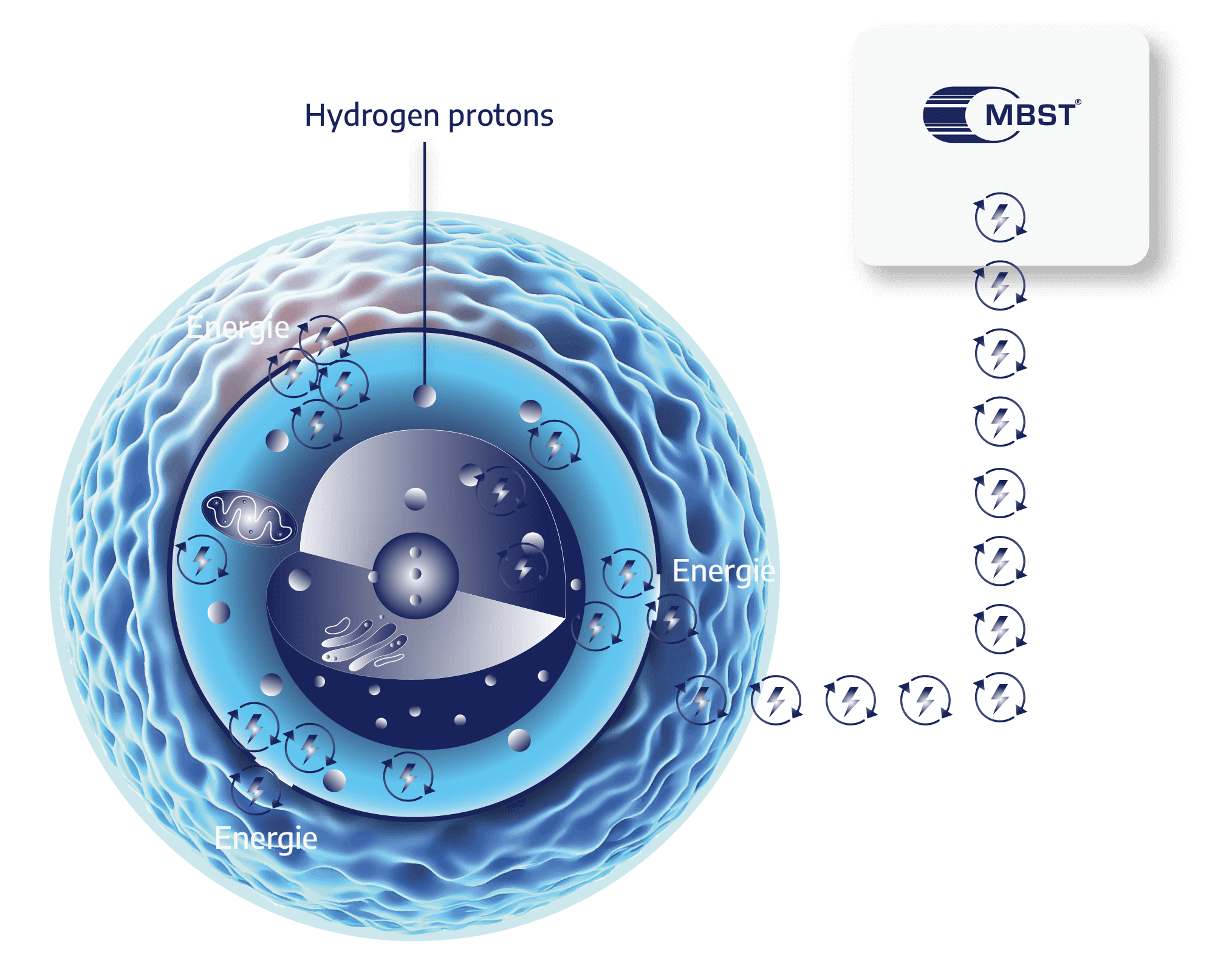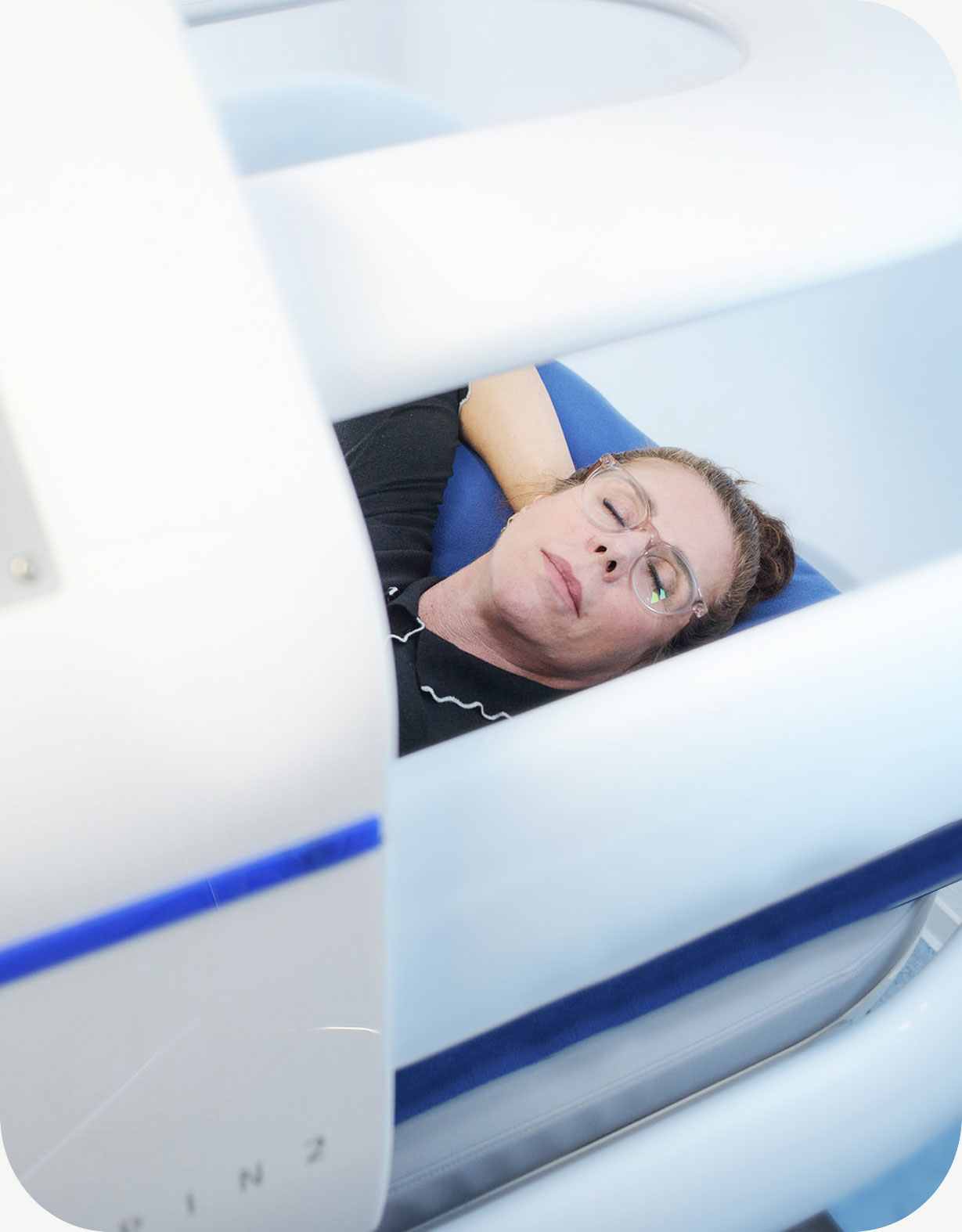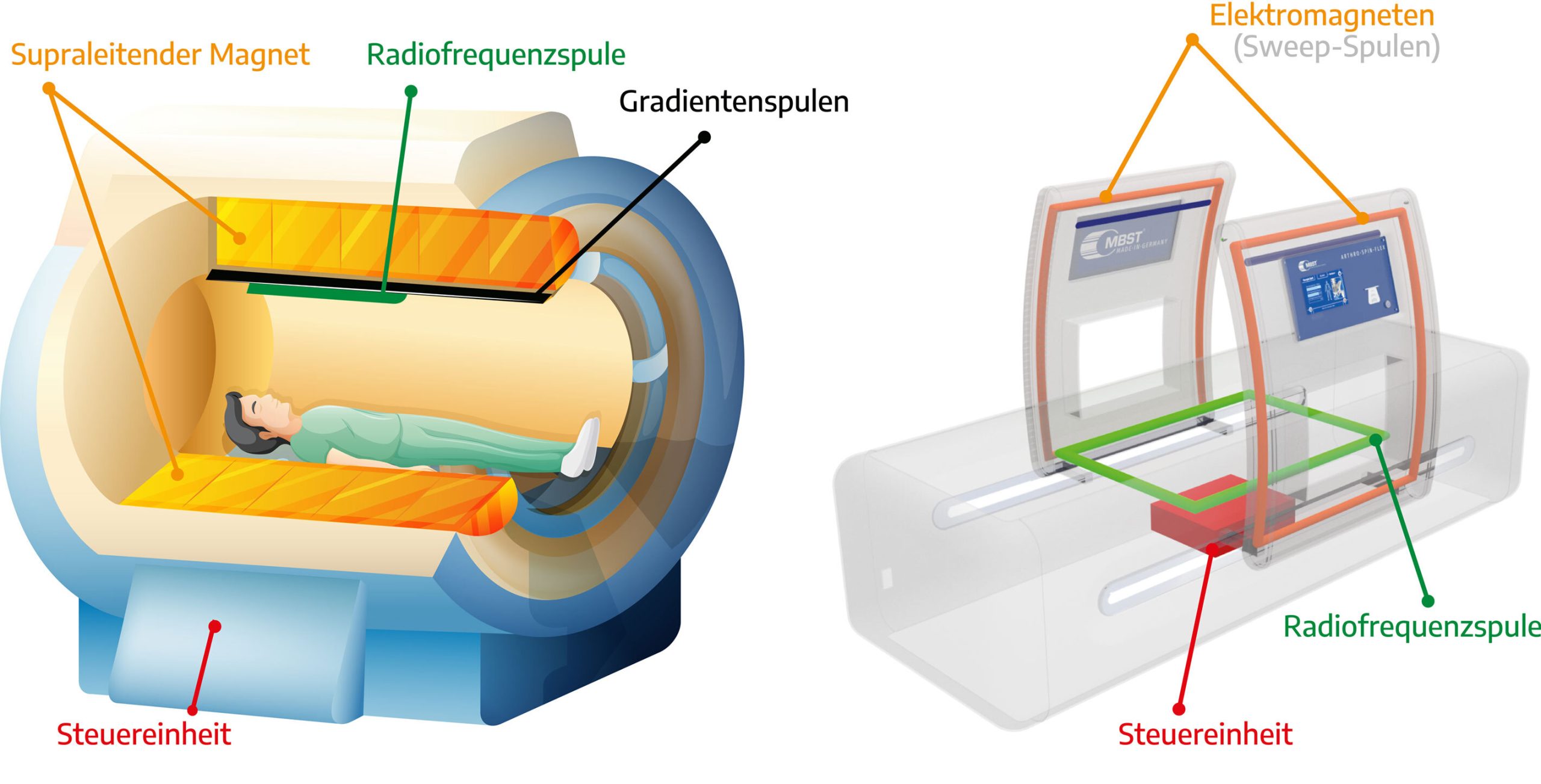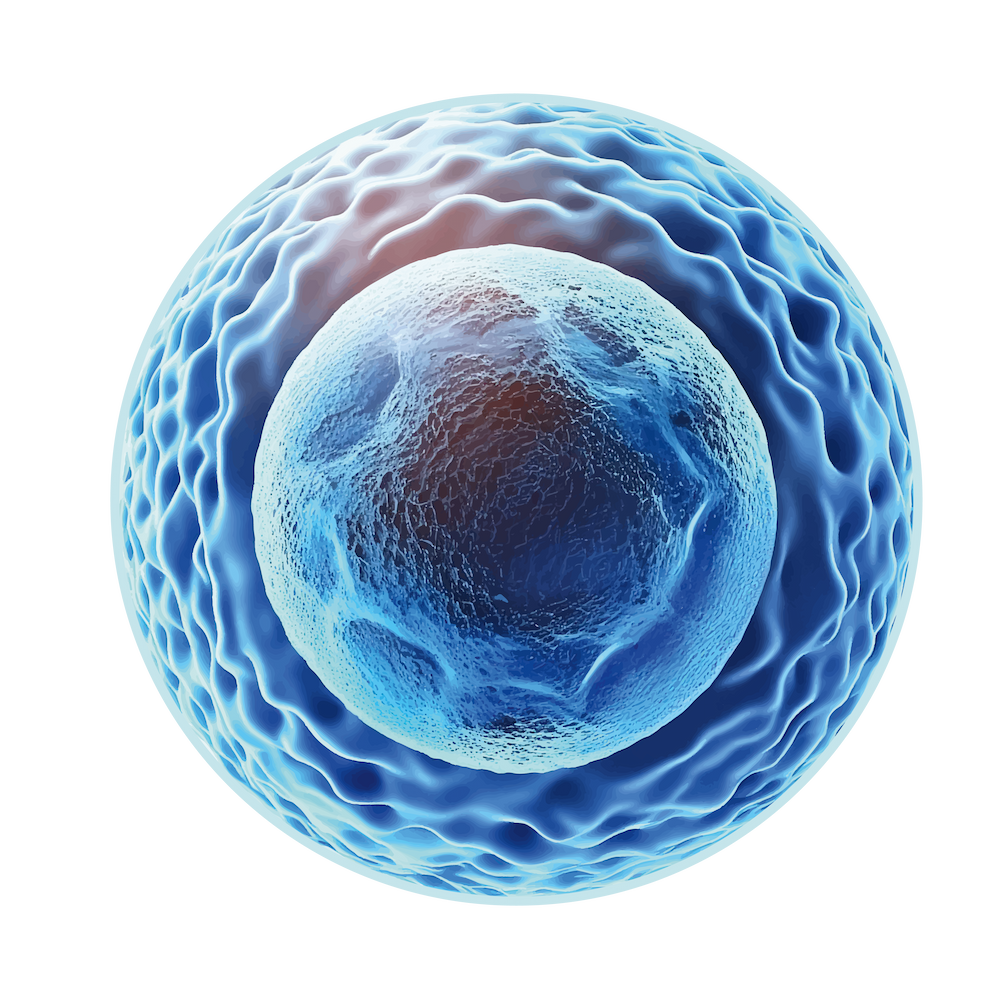The innovative medical technology of the MBST® therapy devices was developed to address malfunctioning, damaged cells in specified tissues. This is achieved by using the physical principle of magnetic resonance in the generation of a treatment field with magnetic resonance conditions. Therapeutic aim is the modulation of regenerative, analgesic and anti-inflammatory effect resp. metabolic processes in the case of conditions and injuries of the musculoskeletal system.
Data from clinical and basic research show that MBST can stimulate various biophysical processes and modulate biochemical reactions on the cellular level to promote regenerative processes and support tissue generation and a healthy cell function.1-8


The MBST technology uses the same physical principle as magnetic resonance imaging (MRI). But MBST does not use magnetic resonance for diagnostical purposes but with a therapeutic approach. Both technologies generate a magnetic resonance field which uses a basic magnetic field and radiowave impulses to stimulate hydrogen protons in organic tissue. The protons then absorb energy which measurably changes their biophysical parameters. When the impulse is turned off, they release the energy again into the surrounding tissue.
The magnetic resonance tomograph measures this released energy and creates a multitude of sectional images of the tissue with them in order to assess damages or changes.
An MBST therapy device also generates magnetic resonance conditions with the tissue in the area to be treated. But it uses the effect of energy absorption and release into the surrounding tissue to affect various physiological mechanisms. This was made possible by the interdisciplinary development of therapy sequences which target specific types of tissue. The sequence and succession of repeatedly switching the impulses on and off was determined in such a way to transfer as much energy as possible during the treatment duration.
Since no images from the inside of the body shall be created, MBST does not require several components which are mainly needed for measuring and processing the vast amount of data necessary for detailed images. Thus, device operation as well as necessary constructional conditions are easier to handle for MBST than for MRI technology.
MBST therapy devices can generate magnetic resonance conditions with very low magnetic fields. This is why screening or precautional measures that MRI requires are not necessary for MBST and the devices have a much more open construction. Because they do not have gradient coils that are needed for localization of signals, MBST devices are virtually soundless. Some patients’ claustrophobic fear or sensitivity to loud noises thus pose no problem.

MBST uses a physical principle to affect the underlying triggers of diseases and injuries on quantumbiological level. With this approach, the therapy does not only address the symptoms but also the cause of diseases and tissue damage.
Besides the acquisition of clinical evidence, basic research is a focus of our cooperation with universities and therapy centres to continuously expand the knowledge about MBST’s active principle. Thus far, several mechanisms have been demonstrated which activate regenerative, analgesic and anti-inflammatory effects resp. may influence signalling pathways and specific cells.1-8
In-vitro studies show that several metabolic processes and cell reactions may be stimulated, activated or in the case of harmful factors also reduced which influence cellular conditions and may support restoration of normal cell function and tissue homoeostasis.
Such subtle physical process on a molecular or quantum biological level may have profound effects on the human body. Today, research knows about many triggers for diseases which are the result of or facilitated by disturbed cell functions. This is also the case with osteoarthritis for example.
In addition to over 25 years of practical application, compatibility and effectivity of MBST therapy have been assessed in more than 30 studies for different areas of indications.
Data from basic research and clinical studies show positive effects on various physiological mechanisms and processes. Study results and the evaluation of patient score sheets in a validated registry demonstrate e.g. less pain, better mobility and easier coping with everyday activities after MBST treatment.

By stimulating cells and regenerative processes, MBST® targets the cause of the condition: injured or degenerated tissue.
Clinical studies also shows that patients report pain reduction, improved mobility and better quality of life.9 MBST therapy thus targets the cause as well as the symptoms.
Inflammation is also a reason for pain. Reducing inflammatory reactions – as MBST has been confirmed to do in studies – may support pain reduction.2,4
Further data confirms that MBST may also affect pain signalling pathways.3
As most injuries or conditions of the musculoskeletal system eventually cause pain, reducing discomfort and pain is important for most patients. This is especially true for patients with chronic pain: due to osteoarthritis, pain syndromes, nerve damage or chronic back issues. The therapeutic approach of magnetic resonance therapy may be a useful supplement to a medicinal or invasive treatment which is especially relevant in the case of elderly patients with a background of polymorbidity and polypharmaceutical use.
Cells require functioning metabolic processes and a healthy environment to fulfill their tasks sufficiently.
Inflammatory reactions and pathological processes within the tissue impair or prevent healthy cell functions.
In-vitro studies confirmed a positive effect on inflammatory reactions.2,4
This can contribute to the creation of a healthy cell environment.
With this treatment approach, MBST is suitable for use in the treatment of conditions in which inflammatory processes play a part: chronic sports conditions due to overloading, postsurgical or for wound healing disorders.
For tissue repair or formation, cells need energy and a healthy environment.
Studies show a marked increase the production of ATP in the mitochondria – the powerhouses of the cells – after MBST.2
The inner cell clocks also influence their regenerative ability since many cell processes proceed in circadian rhythms. The research field of chronobiology examines the importance of circadian processes on health. The current state of knowledge suggests that cells that “got out of time” facilitate the development of various conditions and diseases.
Studies of the University of Innsbruck demonstrate how MBST may influence the inner clock of cells with magnetic resonance and support the re-synchronisation of circadian rhythms.3,5,7,8
Other in-vitro studies shows an increased proliferation rate of endothel, cartilage, bone and nerve cells increases in an MBST treatment field compared to untreated cells: by 271% in cartilage cells and by 290% in bone cells.6
This mechanism of action suggests that MBST can be an effective option in the treatment of degenerative conditions with an increased degeneration of tissue, such as osteoarthritis, osteoporosis, degenerative spinal conditions.
Healthy cells can fulfill their tasks better and thus maintain health and the body’s resilience.
An active working metabolism, good cell nourishment and healthy tissue are necessary and helpful.
But inflammation and tissue damages slow down metabolic processes which can also impair endogenous repair abilities.
Several in-vitro studies demonstrated MBST’s influence on inflammatory reactions, cell proliferation, circadian rhythms and cellular energy metabolism. 3,5,7,8
Degeneration-promoting factors such as free radicals (ROS) could also be modulated and balanced.8
This popup shows the full story from each testimonial when “Story lesen” is clicked. You don’t need to edit this text — it will be replaced automatically.